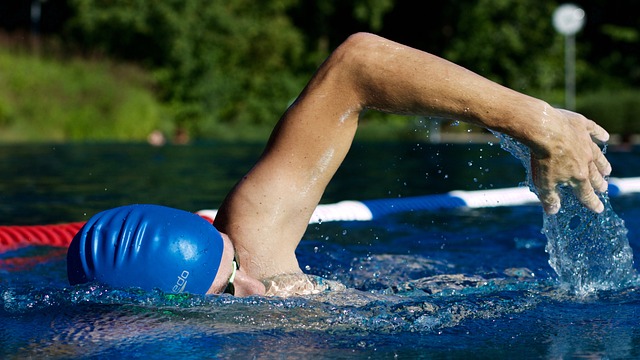Swimmer’s Ear, medically known as Otitis Externa, is an infection of the outer ear canal, the tube that connects the outer ear to the eardrum. It is commonly caused by bacterial or fungal infections, often linked to water exposure. Swimmer’s ear is a common condition, particularly among individuals who swim frequently or have excessive moisture in their ears.
What are the Spread and Transmission of Swimmer’s Ear Otitis Externa?
Swimmer’s ear is not contagious and cannot be spread from person to person. Instead, it is caused by the growth of bacteria or fungi in the ear canal. This growth is facilitated by the following conditions:
- Exposure to Water: Frequent swimming, particularly in contaminated or untreated water, can introduce pathogens into the ear canal.
- Excessive Moisture: Moist environments in the ear canal can promote the growth of bacteria and fungi.
- Ear Canal Injury: Using cotton swabs, fingers, or other objects to clean the ear can damage the delicate skin of the ear canal, providing an entry point for infections.
What are the Symptoms of Swimmer’s Ear?
Symptoms of swimmer’s ear usually develop within a few days of exposure to contaminated water or moisture and may include:
- Itching: Initial itching in the ear canal.
- Redness: Redness inside the ear and around the outer ear.
- Discomfort or Pain: Pain in the ear, which can become severe, especially when the outer ear is touched or pulled.
- Drainage: Clear, odorless fluid draining from the ear.
- Hearing Loss: Temporary hearing loss or a feeling of fullness in the ear due to swelling and fluid buildup.
What are the Causes of Swimmer’s Ear?
Swimmer’s ear is typically caused by bacteria, such as Pseudomonas aeruginosa and Staphylococcus aureus. Fungal infections, though less common, can also cause otitis externa. The risk of infection increases with:
- Water Retention: Water trapped in the ear after swimming, bathing, or exposure to humid environments can lead to infection.
- Ear Trauma: Damage to the ear canal’s skin from cleaning with objects, and wearing earbuds, or hearing aids can facilitate infections.
- Skin Conditions: Preexisting skin conditions like eczema or psoriasis can increase susceptibility.
List of Vulnerable Populations
Certain groups are more susceptible to swimmer’s ear, including:
- Frequent Swimmers: Individuals who spend significant time in water, particularly in contaminated or poorly maintained pools or natural bodies of water.
- Individuals with Narrow Ear Canals: Children and those with naturally narrow ear canals that trap water more easily.
- People with Skin Conditions: Those with chronic skin conditions affecting the ear canal.
- Use of Hearing Aids or Earbuds: Regular use can cause irritation or minor injuries, increasing infection risk.
List of Potential Health Problems Associated with a Water-Borne Infection-Swimmer’s Ear
Complications from swimmer’s ear, if untreated, can include:
- Chronic Otitis Externa: Persistent infection that can last for months.
- Deep Tissue Infection: Spread of infection to deeper layers of the skin or other tissues.
- Abscesses: Formation of painful, pus-filled pockets in the ear canal.
- Hearing Loss: Temporary hearing loss due to swelling and blockage.
What Treatment should be taken to cure Swimmer’s Ear?
Treatment for swimmer’s ear generally includes:
- Ear Drops: Prescription ear drops containing antibiotics, antifungals, steroids, or acidic solutions to treat infection and reduce inflammation.
- Pain Relief: Over-the-counter pain relievers such as ibuprofen or acetaminophen to manage pain.
- Ear Cleaning: Professional cleaning of the ear canal by a healthcare provider to remove debris and discharge.
- Avoiding Water Exposure: Keeping the ear dry while the infection heals.
How to Minimize Exposure to a Water-Borne Infection- Swimmer’s Ear?
Preventive measures to avoid swimmer’s ear include:
- Drying Ears Thoroughly: After swimming or bathing, dry ears thoroughly with a towel or use a hairdryer on the lowest setting, held at a safe distance.
- Ear Protection: Use earplugs or a swim cap to keep water out during swimming.
- Avoiding Ear Irritation: Refrain from inserting objects like cotton swabs into the ears and be cautious with the use of hearing aids or earbuds.
- Maintaining Ear Hygiene: Keeping ears clean and dry, and using preventive ear drops after water exposure if recommended by a healthcare provider.

Also, read: All You Need to Know about Norovirus – a Water-Borne Infection
Sources and References
- Centers for Disease Control and Prevention (CDC)
- Mayo Clinic
- American Academy of Otolaryngology-Head and Neck Surgery
- National Library of Medicine
These resources provide detailed information about the causes, symptoms, treatment, and prevention of swimmer’s ear.





